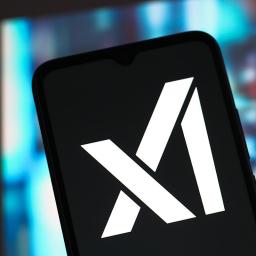 |
by Karissa Bell on (#70A3Z)
Elon Musk's xAI is suing OpenAI, alleging that the ChatGPT maker has stolen its trade secrets. The lawsuit comes after the company recently sued a former employee, Xuechen Li, for allegedly stealing confidential information from the company before taking a job at OpenAI.In its latest lawsuit, which was reported by Sherwood, xAI says that Li's alleged actions are part of "a broader and deeply troubling pattern of trade secret misappropriation, unfair competition, and intentional interference with economic relationships by OpenAI." According to xAI's lawyers, OpenAI also hired two other xAI employees who stole proprietary information from Musk's company."Another early xAI engineer-Jimmy Fraiture-was also harvesting xAI's source code and airdropping it to his personal devices to take to OpenAI, where he now works," the lawsuit states. "Meanwhile, a senior finance executive brought another piece of the puzzle to OpenAI-xAI's 'secret sauce' of rapid data center deployment-with no intention to abide by his legal obligations to xAI.""This new lawsuit is the latest chapter in Mr Musk's ongoing harassment. We have no tolerance for any breaches of confidentiality, nor any interest in trade secrets from other labs," OpenAI said in a statement the company shared with Engadget.Musk, of course, has a complicated history with the ChatGPT maker, and this isn't the first time his rival AI company has sued OpenAI. Last month, xAI filed lawsuits against OpenAI and Apple over Grok's placement on App Store charts. Musk alleged that ChatGPT rank in the top spot represented an "unequivocal antitrust violation." Musk has also filed numerous lawsuits against OpenAI over its relationship with Microsoft and its move to become a for-profit company.Update 2:49 PM ET: Added comment from OpenAI.This article originally appeared on Engadget at https://www.engadget.com/ai/xai-accuses-openai-of-stealing-its-trade-secrets-in-new-lawsuit-152926944.html?src=rss
|
 Engadget is a web magazine with obsessive daily coverage of everything new in gadgets and consumer electronics
Engadget is a web magazine with obsessive daily coverage of everything new in gadgets and consumer electronics
| Link | https://www.engadget.com/ |
| Feed | https://www.engadget.com/rss.xml |
| Copyright | copyright Yahoo 2025 |
| Updated | 2025-12-26 08:47 |
 |
by Lawrence Bonk on (#70A9V)
Anker has opened up pre-orders for the Soundcore Nebula X1 Pro home theater system after teasing the product at IFA. This is being done via the crowdfunding platform Kickstarter and prices start at $3,000, which is an early bird discount from the eventual $5,000 price tag.The Nebula X1 Pro is something of an all-in-one home theater system, as it includes a 4K projector, a soundbar, a subwoofer and satellite speakers. It boasts a unique design, with the subwoofer floating inside a spring-type assembly system to avoid transferring vibrations. The soundbar speakers fold out to the left and right of the projector and two wireless satellite speakers allow for surround sound.The system supports Dolby Atmos and offers IP43 protection from light rain and dust. This makes it a great projector for outdoor get togethers, which is assisted by a retractable power cable, a telescopic handle and rolling wheels on the bottom.The motorized lens allows for an easy setup and the speakers can be used to stream audio without any accompanying video. It even comes with a pair of wireless microphones for getting the crowd pumped up before movie night. In other words, this is a portable party machine.This is a refinement of the pre-existing Nebula X1 projector, which we absolutely loved. We said that it offers "the clearest, most vivid image quality" that we ever experienced with a projector. That also costs $3,000, but features a less expansive speaker system. The audio quality with the original projector was "very respectable" but will likely pale in comparison to a full Dolby Atmos system with satellite speakers and the like.The Nebula X1 Pro has already sailed past its funding goal, so it's definitely coming. Deliveries are expected to go out this December.This article originally appeared on Engadget at https://www.engadget.com/home/home-theater/anker-opens-pre-orders-for-its-nebula-x1-pro-projector-system-184635440.html?src=rss
|
 |
by Ian Carlos Campbell on (#70A9W)
Nintendo recently announced that the next mainline Fire Emblem game is coming in 2026, and it looks like the company has another take on the popular strategy series to tide you over while you wait. Fire Emblem Shadows is a new mobile spin-off that combines the series' tactics gameplay with some of the social dedication mechanics popularized by games like Among Us, and it's available to download now.Shadows follows groups of heroes - the typical collection of royals, rogues and anime archetypes - navigating an underground labyrinth. "Players choose to take on the role of either a disciple of light, aiming to find their way through the labyrinth, or a disciple of shadow," Nintendo writes."After the initial battle, players vote to determine who they believe is the treacherous disciple of shadow. The outcome of the vote affects whether the next battle is more favorable or more challenging."Unlike a typical Fire Emblem match, though, you don't have direct control over your characters during battles. Instead, you can see the path they'll take through a map and are tasked with deploying spells that hurt enemies, heal heroes or offer other buffs while they move. The gameplay-style makes the whole thing feel hands-off and even a little boring in early battles, but it's possible that could change with more difficult foes. You also earn upgrades as you play, and Nintendo is selling a season pass that unlocks premium rewards while you work your way through either of Fire Emblem Shadows' two plots.While Nintendo's push into mobile games has slowed in recent years, the company has fairly consistently updated its original spin-off,Fire Emblem Heroes, since it was released in 2017. That game offered a take on the series' gameplay that hewed closer to the original, just with a gacha-style lottery system for unlocking new characters. If it proves popular, it seems likely Fire Emblem Shadows will see the same level of support.Fire Emblem Shadows is available to download for free on iOS and Android.This article originally appeared on Engadget at https://www.engadget.com/gaming/nintendo/fire-emblem-shadows-mixes-in-a-little-social-deduction-with-its-tactics-182907183.html?src=rss
|
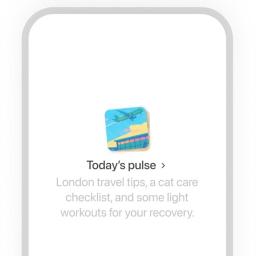 |
on (#70A9X)
ChatGPT already tries to answer all your questions. Now it's trying to answer questions before you ask them. OpenAI's new feature for its AI chatbot is ChatGPT Pulse, a summary of personalized updates. The blog post explaining Pulse positions it as a bulletin to start the day based on asynchronous research done by ChatGPT.Users can direct Pulse toward or away from particular topics, and the summaries will also draw on chat history and, if connected, your Gmail and Google Calendar.The examples OpenAI gave for what Pulse recommendations might look like were "follow-ups on topics you discuss often, ideas for quick, healthy dinner to make at home that evening, or next steps toward a longer-term goal such as training for a triathlon."For now, ChatGPT Pulse is available for Pro tier subscribers to test. However, OpenAI aims to eventually roll the feature out to all users.This article originally appeared on Engadget at https://www.engadget.com/openai-introduces-personalized-daily-summaries-with-chatgpt-pulse-181532935.html?src=rss
|
 |
by Andre Revilla on (#70A9Y)
The European Union has summarily rejected calls from Apple to repeal and replace its Digital Markets Act (DMA), the law that governs much about how giant tech companies must operate within the 27-nation bloc. As first reported by France 24, EU digital affairs spokesperson Thomas Regnier responded to Apple's open letter regarding the DMA's effect on users in the EU."Apple has simply contested every little bit of the DMA since its entry into application," said Regnier. He added that the Commission had "absolutely no intention" of dismantling the DMA. The landmark legislation was passed in 2022 in an effort to rein in the ever-growing reach and power of big tech and to level the playing field for smaller would-be competitors.Since then, Apple has found itself in hot water in the EU over its App Store rules, cross-device interoperability and its browser options. Earlier this year, the Commission fined Apple approximately $570 million for anti-competitive activities, which the company is appealing.This summer, the Commission opened a period of public consultation for the DMA with a deadline for submission of September 24. Apple submitted an official response, while also taking the time to publicly decry the DMA through a blog post.In the post, Apple says "it's become clear that the DMA is leading to a worse experience for Apple users in the EU." The company says it is "urging regulators to take a closer look at how the law is affecting the EU citizens who use Apple products every day," alleging that the implementation of these laws is opening users to higher risks of scams, exposure to harmful apps and weakened security surrounding user data.The back-and-forth over the DMA and the hefty fines being levied against big tech companies has become part of the political discourse amid trade negotiations between the US and the EU. President Donald Trump expressed his ire at American companies facing such heavy fines, and The Wall Street Journal alleged that the EU was using these fines in part as a bargaining chip in trade negotiations.This article originally appeared on Engadget at https://www.engadget.com/big-tech/eu-tells-apple-it-has-no-intention-of-repealing-the-digital-markets-act-175950691.html?src=rss
|
 |
by Kris Holt on (#70A75)
Amazon will pay a record civil penalty to settle a case with the Federal Trade Commission. The agency accused Amazon of tricking consumers into signing up for a Prime membership without their consent and making it hard for customers to cancel in a lawsuit filed in 2023.To settle the charges, Amazon has agreed to pay a $1 billion civil penalty and $1.5 billion to refund customers. The company also agreed to "ease unlawful enrollment and cancellation practices for Prime," per the FTC.The agency says the civil penalty is the largest ever for a case involving a breach of its rules - it had accused Amazon of violating the FTC Act and the Restore Online Shoppers' Confidence Act. The $1.5 billion in consumer redress will provide "full relief for the estimated 35 million consumers impacted by unwanted Prime enrollment or deferred cancellation," the FTC said. It added that this is the second-highest restitution award it has ever obtained.Moreover, Amazon will be prohibited from using some of the dark patterns (i.e. deceptive design practices) it has employed to dissuade customers from canceling Prime memberships. For instance, the settlement precludes it from displaying a button that reads, "No, I don't want Free Shipping" during the cancellation flow. Instead, it will have to show a "a clear and conspicuous button for customers to decline Prime," per the terms of the settlement, which does not include an admission of guilt on Amazon's part.The company will also have to provide clearer information about a Prime subscription to consumers during the sign-up process. This will include details about the price, whether the subscription auto-renews and how to cancel."Amazon and our executives have always followed the law and this settlement allows us to move forward and focus on innovating for customers," Amazon spokesperson Mark Blafkin said in a statement provided to Engadget. "We work incredibly hard to make it clear and simple for customers to both sign up or cancel their Prime membership, and to offer substantial value for our many millions of loyal Prime members around the world. We will continue to do so, and look forward to what we'll deliver for Prime members in the coming years."Update September 25, 1:47PM ET: Added Amazon's statement and clarified that the settlement doesn't include an admission of guilt.This article originally appeared on Engadget at https://www.engadget.com/big-tech/amazon-is-paying-25-billion-to-settle-ftc-claims-it-duped-customers-into-signing-up-for-prime-160641347.html?src=rss
|
 |
by Lawrence Bonk on (#70A71)
Microsoft has ended access to its data centers for a unit of the Israeli military that helped power a massive surveillance operation against Palestinian civilians, according to a report by The Guardian. The company says that the country's spy agency has violated its terms of service.This surveillance system collected millions of phone calls made by Palestinian civilians every day in Gaza and the West Bank. The massive trove of data has been stored via Microsoft's Azure cloud platform, but the company just informed Israel's spy agency that this practice will no longer be acceptable.Microsoft's vice-chair and president, Brad Smith, alerted staff of the move in an email, writing that the company had ceased and disabled a set of services to a unit within the Israel ministry of defense." He went to suggest that this included cutting off access to cloud storage and some AI services.We do not provide technology to facilitate mass surveillance of civilians," he continued. "We have applied this principle in every country around the world, and we have insisted on it repeatedly for more than two decades."Microsoft came to this decision after conducting an external inquiry to review the spy agency's use of its Azure cloud platform. It also comes amid pressure from both employees and investors for the company to examine its relationship with Israel as it relates to the military offensive in Gaza.This reportedly started back in 2021, when Microsoft CEO Satya Nadella allegedly okayed the storage effort personally after meeting with a commander from Israel's elite military surveillance corps, Unit 8200. Nadella reportedly gave the country a customized and segregated area within the Azure platform to store these phone calls, all without knowledge or consent from Palestinians.While conflict has existed between Israel and Palestinian groups for decades, these platforms were built out a full two years before the the most recent escalation in violence, beginning October 7, 2023. The mantra when building out the project was to record "a million calls an hour."Leaked Microsoft files suggested that the lion's share of this data was being stored in Azure facilities in the Netherlands, but Israel allegedly moved it after Microsoft started its initial investigation. The Guardian has reported that Unit 8200 planned on transferring the data to the Amazon Web Services cloud platform. We have contacted Amazon to ask if it has accepted this gigantic trove of personal data.This article originally appeared on Engadget at https://www.engadget.com/big-tech/microsoft-blocks-israels-use-of-its-data-centers-for-mass-surveillance-of-palestinians-170107061.html?src=rss
|
 |
by Andre Revilla on (#70A72)
Nintendo will open an official pop-up store in London this fall, its first-ever in the UK. The store will be open from October 22 to November 16 on the ground floor of the Westfield London shopping mall in Shepherd's Bush.The Japanese gaming giant operates official stores in Tokyo and Kyoto, as well as permanent locations in New York and (20 years later) San Francisco. The pop-up store in London will feature an extensive collection of Nintendo merchandise across the brand's most iconic titles including Super Mario, Donkey Kong, The Legend of Zelda, Animal Crossing and more. Fans can pick up all sorts of apparel and collectible accessories like keyrings, pins and bags.Entry to the pop-up during its first week will be by reservation only, with tickets going live on October 7. Guests will be able to reserve a date and time slot to enter between October 22 and 26. From October 27, store entry will operate via a first-come, first-served system, though don't be surprised to see a line out the door.This article originally appeared on Engadget at https://www.engadget.com/gaming/nintendo/nintendo-is-opening-a-pop-up-store-in-london-this-fall-164549021.html?src=rss
|
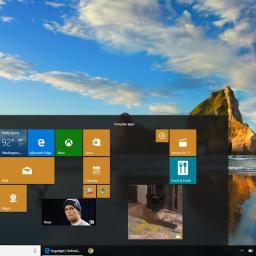 |
by Will Shanklin on (#70A73)
Score another win for EU consumers. On Wednesday, Microsoft backtracked on the strings it had attached to Windows 10's Extended Security Updates (ESU) program. However, it only did so in the European Economic Area (EEA) following complaints from an advocacy group. The elephant in the room? The EU's Digital Markets Act (DMA) safeguards against unlawful bundling and restricting consumer choice. Had the company not relented, those regulations could have spawned investigations and hefty fines."In the European Economic Area, we're making updates to the enrollment process to ensure it meets local expectations and delivers a secure, streamlined experience," a Microsoft spokesperson told Windows Central. "Our goal is to support customers and provide them with options as they transition to Windows 11, with uninterrupted access to critical security updates."The move stems from Microsoft's decisions regarding the future of Windows 10. In early 2023, the company said it would only support crucial security updates for the operating system until October 2025.MicrosoftSince then, the company launched the ESU program. It allows consumers to pay $30 to add a one-year extension on security updates. The Windows maker also added a couple of "free" options. The first one is to enable Windows cloud backup using a Microsoft account. However, that uses OneDrive. And once you surpass 5GB of free storage, you'll need to pay for more. (If you have a lot of big files to back up, that would likely apply.) The other option is to spend 1,000 Microsoft Rewards points, which not everyone has lying around.The advocacy org Euroconsumers called out Microsoft in June. "Limiting security means limiting product life," the nonprofit wrote. It described Microsoft's Windows 10 requirements as "planned obsolescence." That's the practice of deliberately designing products with limited lifespans. Conveniently for Big Tech, that tends to boost sales. Inconveniently for consumers, it's an added cost.Planned obsolescence is also a term that could have drawn the ire of EU regulators. Tech titans like Microsoft found to violate the DMA can be forced to pay up to 10 percent of their global annual turnover.Euroconsumers said Microsoft was steering consumers toward two options. "Buy a new device before you're ready or stick with your current one and face increased security risks," it wrote. The group noted that 22 percent of EU PC owners still run a Windows device from 2017 or earlier. 2018 is often considered a rough baseline for Windows 11 eligibility, given the software's technical requirements.While PC users in the EEA now have an extra year, the rest of the world isn't so lucky. If you're still running Windows 10, you only have until October 14 to do one of three things: upgrade to Windows 11 (Microsoft's preferred choice), pay $30, turn on Windows backup, or fork over reward points. Choose wisely.This article originally appeared on Engadget at https://www.engadget.com/computing/microsoft-pressured-to-extend-free-windows-10-security-updates-in-most-of-europe-164533056.html?src=rss
|
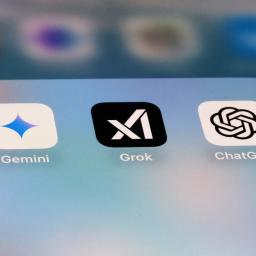 |
by Matt Tate on (#70A74)
Despite Elon Musk and Donald Trump's very public spats and seemingly still ongoing feud, the White House has remained committed to supporting the former's AI ambitions. And today, the General Services Administration (GSA) announced that it has reached an agreement with xAI that will allow it to buy Musk's Grok AI models for $0.42 per organization.As part of the Trump administration's OneGov procurement initiative, the deal with xAI will allow federal agencies access to the Grok 4 and Grok 4 Fast advanced reasoning models. The 18-month contract is the longest OneGov AI procurement agreement to date. xAI announced its Grok for Government strategy earlier in the summer, which signalled its intention to provide the government with a suite of AI products, including custom models for national security, science and healthcare purposes.As well as opening its models for government use, xAI is also providing dedicated engineers to speed up the implementation of its AI tools for participating agencies, and will offer an "upgrade path" for expanded features and higher rate limits. Such access is a crucial part of Trump's AI Action Plan, designed to position the US as the global leader in AI. And his administration doesn't appear to have been put off by Grok's bizarre behavior in recent months, such as its preoccupation with far-right conspiracy theories regarding "white genocide" in South Africa, or its brief but enthusiastic turn towards antisemitism.xAI is the latest in a line of AI companies to strike deals with the GSA. Back in August, Anthropic began offering its Claude AI model to three branches of the US government for $1, following Gemini and xAI's arch rival OpenAI joining a list of approved vendors.This article originally appeared on Engadget at https://www.engadget.com/ai/elon-musks-grok-is-cleared-for-federal-government-use-162407911.html?src=rss
|
 |
by Lawrence Bonk on (#70A40)
Nothing is spinning off its budget brand CMF into an independent subsidiary, according to a report by TechCrunch. India will serve as the newly-formed company's headquarters for manufacturing and R&D, thanks to a partnership with one of the country's telecom operators. Nothing says this venture will create over 1,800 jobs in the country.India is actually a good choice for the HQ. The country is Nothing's strongest market overall, with over a 2 percent market share in smartphones. It's the fastest-growing brand in the region, with an 85 percent growth in shipments year over year. CMF also specializes in budget-friendly handsets under $200 and this is the dominant category in India, according to the IDC.
|
 |
by Andre Revilla on (#70A41)
Spotify has announced a set of policy changes surrounding AI-generated music and spam on its streaming platform. The company is helping to develop an industry standard for AI disclosure in music credits, alongside DDEX. It will be strengthening its approach to AI-assisted spam, such as unauthorized vocal clones, as well as uploaded music that fraudulently delivers music to another artist's profile.The new disclosures will encourage artists to share what aspect, if any, of their production was created with the assistance of AI. Instead of a song simply being marked as "is AI" or "no AI," artists can specify whether they used AI-generated vocals, instrumentation or post-production.The streamer will also debut a new impersonation policy, making it clearer how the platform deals with AI voice clones. The policy promises to give artists stronger protections against this sort of spam, and clearer recourse should any appear."...the pace of recent advances in generative AI technology has felt quick and at times unsettling, especially for creatives. At its best, AI is unlocking incredible new ways for artists to create music and for listeners to discover it. At its worst, AI can be used by bad actors and content farms to confuse or deceive listeners, push 'slop' into the ecosystem, and interfere with authentic artists working to build their careers," Spotify said in its announcement.These aren't the only tactics that bad actors use to divert royalties and deceive listeners. Spotify shared that other types of spam "such as mass uploads, duplicates, SEO hacks, artificially short track abuse, and other forms of slop" have become easier to create and deploy as AI tools substantially lower the barrier of entry to creating this type of content.To address these, the streamer is launching a new spam filter this fall that will identify uploads and tracks that engage in these types of spam, tag them on the platform, and stop recommending them to users. Spotify said that over the past 12 months it has already removed more than 75 million "spammy" tracks.Spotify says that this sort of spam can dilute the royalty pool and take attention away from real artists trying to earn a living, even in part on the platform. The company says its goal is to achieve more transparency for listeners and protect artist identity through these new policies.These new policies don't address AI-generated projects like The Velvet Sundown, which remains on the platform despite all its lyrics, vocals, and imagery being entirely AI-generated. Spotify doesn't directly acknowledge the AI band, but says "we support artists' freedom to use AI creatively while actively combating its misuse by content farms and bad actors."This article originally appeared on Engadget at https://www.engadget.com/entertainment/streaming/spotify-is-doing-more-to-address-ai-slop-on-its-platform-151102801.html?src=rss
|
 |
by Matt Tate on (#70A42)
Microsoft has officially unveiled the next Forza Horizon game, confirming months of rumors that the latest entry in its consistently excellent open-world racing series will be set in Japan. Announced, rather fittingly, at Tokyo Game Show in an Xbox briefing, Forza Horizon 6 has a 2026 release date and will launch first on Xbox and PC. A few years ago it would have stayed on those platforms, but after Forza Horizon 5 made its way to PS5 earlier this year, all bets are off on Microsoft exclusivity in the future.As one of Xbox's most important series, it's a bit disappointing that we didn't get any gameplay in the TGS teaser trailer. Instead, the camera pans across what looks like a workbench, with license plates and trinkets from countries featured in previous entries hung on the wall behind it. Eventually we get to Japan, and the camera moves up to reveal Mount Fuji in the distance, with the obligatory cherry blossom in the corners of the frame.What the announcement lacked in gameplay, though, it somewhat made up for with the accompanying Xbox Wirepost, which sheds some light on Playground Games' decision to choose the Land of the Rising Sun as the location for Forza Horizon 6. According to the game's Art Director, Don Arceta, the "unique culture" of Japan - from its cars, to its music and fashion - was a driving factor, and added that with five Horizon games already under its belt, the studio feels it can build an "authentic representation" of the country that does it justice.Playground Games is keeping its cards close to its chest where real-life locations featured in the game are concerned, but unsurprisingly confirmed that Tokyo is one of them, as well as some of the country's rural and mountain areas. The studio isn't saying much about cars yet, either, but promised that Japanese car culture will be reflected. It also confirmed that seasons will once again be a big part of the experience.Forza Horizon 5 came out in 2021 and turned Engadget's "not much of a car guy" Nathan Ingraham into a racing game fan with its incredibly detailed Mexico setting, approachable driving and accessible open-world design.This article originally appeared on Engadget at https://www.engadget.com/gaming/forza-horizon-6-takes-the-arcade-racing-series-to-japan-in-2026-142253601.html?src=rss
|
by Sam Chapman on (#6FXRY)
Surfshark is one of the youngest major VPNs, but it's grown rapidly over the last seven years. Since 2018, it's expanded its network to 100 countries, added a suite of apps to its Surfshark One package and experimented with advanced touches like servers that constantly rotate your IP address. Formerly a budget VPN, Surfshark is still pretty affordable but the cost of a one-month subscription is way too high. These days, it's more interested in innovation than affordability. Its features may not always be cutting-edge - Nexus is basically Tor and Everlink is a slightly better kill switch - but it's rare to find either implemented so well in a commercial VPN. Plus, download and upload speeds are fantastic. It all adds up to one of the best VPNs for casual users, even when compared to others in its weight class. But those already deeply familiar with VPNs might trip over some aspects. For this review, I studied 11 different angles on Surfshark's service, some through hands-on tests and others with old-fashioned journalism. Check out the sections most important to you, then head to the end for my final verdict. Editor's note (9/25/25): We've overhauled our VPN coverage to provide more detailed, actionable buying advice. Going forward, we'll continue to update both our best VPN list and individual reviews (like this one) as circumstances change. Most recently, we added official scores to all of our VPN reviews.Check out how we test VPNs to learn more about the new standards we're using. Table of contents
 |
by Mariella Moon on (#70A0B)
Apple has long opposed the Digital Markets Act, which is pretty much expected for a Big Tech company. Now, a bit over a year after it came into force, Apple has asked the European Commission to repeal it, according to the Financial Times and Bloomberg. "The DMA should be repealed while a more appropriate fit for purpose legislative instrument is put in place," the company has told the commission in its first public consultation to review the legislation. The EU's Digital Markets Act, which was signed into law in 2022, aims to rein in Big Tech's power and to improve competition for smaller players. If a company is found to have violated DMA's rules, it could pay between 10 to 20 percent of its global revenue.In a blog post separate to the feedback it submitted to the Commission, Apple detailed how DMA affects its users in the EU. The company said that because the law requires it to make sure certain features work on non-Apple products, feature rollouts get delayed in the region. Its team has not found a way to securely bring iPhone Mirroring to non-Apple devices, for instance, because it requires a lot of engineering work. As a result, Apple has yet to release that feature, along with Live Translation via AirPods, as well as Visited Places and Preferred Routes on Maps, in the European Union.Apple also said that since the DMA requires it to allow sideloading, other app marketplaces and alternative payment systems, users in the region are exposed to more risks. They're more exposed to things like fake banking apps and disguised malware, and they could also come across third-party payment systems that wouldn't allow refunds. If you'll recall, the European Commission slapped Apple with a $587 million fine in April for preventing developers from informing customers about sales and other offers outside the App Store. Apple called the penalty "unprecedented" and filed an appeal."Regulators claimed the DMA would promote competition and give European consumers more choices," Apple wrote in its post. "But the law is not living up to those promises... That's why we're urging regulators to take a closer look at how the law is affecting the EU citizens who use Apple products every day." Even though the company is clearly against the DMA, it said it's dedicating "thousands of hours" to bring features to the EU. A spokesperson for the Commission told the Times that it's normal for companies to "need more time to make their products compliant" and that the Commission is helping them get there. "[C]ompliance is not optional, it's an obligation," the spokesperson added.This article originally appeared on Engadget at https://www.engadget.com/big-tech/apple-repeats-its-long-held-criticism-of-the-eus-digital-markets-act-130058440.html?src=rss
|
 |
on (#709Y2)
Meta is starting to move more teens on Facebook and Messenger into dedicated "teen accounts" that have added parental controls and other protections for younger users. The expansion comes as the company says that "hundreds of millions" of teens are already using the accounts across Instagram, Facebook and Messenger.Meta first brought teen accounts to Instagram a year ago and began rolling them out to teens in the US, Canada, UK and Australia on Facebook and Messenger earlier this year. Now, the specialized accounts will be available to teens globally. The company has made the accounts mandatory for all teens, and requires younger teens (13 -15-year-olds) to get their parent's permission to change safety-related settings. Meta uses AI to detect teens that may be lying about their age. The accounts allow parents to supervise how their children use Meta's apps, including features for monitoring screen time and the ability to view who their kids are messaging with. Teen accounts also come with more restrictive privacy and safety settings meant to limit their contact with adults they don't know.Instagram is also expanding its program that allows US middle schools and high schools to expedite reports of bullying and other problematic behavior. Up to now, the company has been piloting the "school partnership program," with a handful of middle schools and high schools. Meta says that it's "heard positive feedback from participating schools" and that any US-based school can sign up to join.The social media company has spent the last few years ramping up parental control features and attempting to close some of the more obvious gaps in its safety features. The company is currently facing numerous lawsuits and investigations into its track record on child safety.Update, September 25, 2025, 9:03 AM ET: Clarified the age range for teen accounts.This article originally appeared on Engadget at https://www.engadget.com/social-media/meta-rolls-out-teen-accounts-for-facebook-and-messenger-across-the-world-120000352.html?src=rss
|
 |
on (#709Y1)
There I was, sitting on the couch in a nondescript suburban cafe, typing away on a MacBook Pro while staring off into the distance with what looked to be oversized glasses (which also were conspicuously plugged into the computer). To most people, I probably looked a bit silly. Nobody actually commented on my setup, or maybe I was just too focused to notice. From my perspective, I was looking at a massive 222-inch virtual display through Xreal's One Pro smart glasses, which was mirroring my laptop screen. Like a visual version of noise canceling, the glasses blotted out the chaos of the cafe so that I could actually concentrate on writing this review. I could also darken the frames a bit to serve as pseudo-sunglasses, further removing distractions. This work session in particular made the idea of smart glasses seem more compelling than anything in Meta's failure-prone demo for the Ray-Ban Display. With the One Pro, Xreal is close to making the dream of versatile smart glasses a reality. It's not trying to be something you wear all day, an aspiration Meta is desperately chasing - instead, it's meant for specific purposes. Plug the One Pro into your laptop and you can use it as a virtual monitor nobody else can see. Connect it to your phone or tablet and you've got your very own personal theater wherever you go. You can even hook it up to some portable game consoles (but not the Switch 2, unfortunately) to play on the move. The Xreal One Pro smart glasses look very similar to oversized sunglasses. Devindra Hardawar for Engadget Sure, the Xreal One Pro still looks clunky, with its oversized frames, thick arms and annoying USB-C cable. But at $650, it's also significantly less expensive than the Apple Vision Pro and easier to travel with than any VR headset. And at this point, it's vastly more useful than the Ray-Ban Display, since its displays work across both of your eyes and can easily mimic a full-sized TV or monitor. Meta's smart glasses can only show you a very limited amount of information in its single screen. To be clear, that lines up with the different use case for each product: The Xreal One Pro is more of a monitor you wear on your face while stationary, whereas the Ran-Ban Display glasses aim to overlay your real-time point of view with basic phone notifications and services. Those frames are also meant to be more independent, allowing you to listen to music, take calls and capture photos and videos at a whim. But after seeing Mark Zuckerberg and his team try (and mostly fail) to demonstrate the Ray-Ban Display at its Connect developer conference, I also think the camera-less Xreal One Pro avoids ethical dilemmas inherent in most smart glasses. Should we normalize wearable devices that can covertly record us at all times? And on a practical level, do we really want to walk around with virtual notifications in our faces all day? Personally, I think we're better off with specialized tools that leave us in control, and don't upend our entire social structure. Xreal One Pro smart glasses Devindra Hardawar for Engadget At the most basic level, Xreal's One Pro smart glasses are just virtual displays you can wear anywhere. You can unlock more augmented reality capabilities with the $99 Xreal Eye camera accessory, but it's not exactly necessary. The One Pro features dual 0.55-inch Sony Micro-OLED screens running at 1080p with a 120Hz refresh rate and a 57-degree field of view (FOV), the widest we've seen yet from Xreal. Modern VR headsets like the Quest 3 typically offer a much more expansive 110-degree FOV, but they also trap you in a dark void. The One Pro, and all of Xreal's frames, still let you see the real world outside of its AR screens, and they don't block out ambient light. But there are also several shades you can use to darken the glasses themselves, which make the virtual display appear brighter and more distinct. At the darkest level, the One Pro can appear almost entirely black, something that's great for movies. There's also a helpful auto transparency mode that undims the displays when you look away from your virtual screen. Xreal One Pro smart glasses Devindra Hardawar for Engadget Bose mini-speakers are built into the arms of the glasses, as well as buttons for managing brightness and settings. A single USB-C port sits at the end of the left arm. I figured the cable would be a pain during extended sessions, but most of the time I quickly forgot it was there. Consequently, there's no wireless support - something I'm totally fine with, since that would inevitably require batteries and additional weight on the glasses. At 87 grams, the One Pro weighs about the same as a deck of playing guards. It sat on my face comfortably, thanks to its sturdy nose pads, and I was able to wear it for hours without much issue. Since the Xreal One Pro is fashioned after sunglasses, they can't sit atop normal eyewear like the Quest 3 and other VR headsets. If you have a glasses prescription, you'll need to buy inserts from HonsVR, which start at $50. They're a bit annoying to install, but otherwise they did a fine job of letting me see the One Pro's displays clearly. They do make sharing the glasses annoying, though, since the inserts will need to be removed every time you do so. I'd also be worried about something getting bent or broken with constant removals. I mostly used the Xreal One Pro as a virtual display while working on laptops, but I also found them incredibly helpful for watching movies and videos when away from home. On the many occasions where I was stuck waiting for my family in the hellscape of a suburban parking lot, all I had to do was put on the Xreal One Pro, plug it into my phone and I could be watching anything on a massive virtual screen. It was even more helpful while traveling. I could never muster the bravery to wear an Apple Vision Pro on a flight, or justify stuffing it into a bookbag. But that wasn't a problem at all with the Xreal One Pro, as its bulbous traveling case can fit almost anywhere. Having a portable virtual display you can deploy instantly honestly feels like a superpower. Xreal One Pro smart glasses Devindra Hardawar for Engadget As someone who's picky about displays, I was surprised how bold and colorful the glasses were when I cranked up the brightness and background shade settings. I'd definitely love to see what sharper 4K screens could look like, but even at 1080p per eye, the Xreal One Pro delivered decently clear text and detailed imagery. Its built-in Bose speakers were also surprisingly clear while watching videos or playing some background tunes. (I would always use my AirPods Pro if I really wanted to immerse myself in the movies I was watching, though.) In a pinch, the Xreal One Pro were helpful gaming accessories too. At home, I'd rather be staring at my 4K Alienware computer monitor, or the Steam Deck OLED's native screen. But for slower-paced titles, it was nice to game on a large virtual screen just by plugging the glasses into my Steam Deck. Getting the device connected to the original Nintendo Switch takes some work though, as it only works when connected to a dock and using an accessory like the Xreal Hub. Unfortunately, the Switch 2 doesn't work with the One Pro at all right now (unless you start daisy chaining USB-C and HDMI adapters). Xreal says its upcoming Neo accessory will offer video pass-through for the Switch 2, but there's no word on when that will arrive. The more I used the Xreal One Pro, the more impressed I was by its sheer versatility. Its only major downsides are its $650 price (up from $600 originally), as well as the fact that you'll never look cool wearing it. And no, you won't be walking around while wearing the One Pro, like you could with Meta's Ray-Ban Display. But hey, that also means you won't have to worry about people calling you a pervert for wearing spy glasses.This article originally appeared on Engadget at https://www.engadget.com/ar-vr/xreals-one-pro-intrigues-me-in-ways-metas-smart-glasses-dont-120000554.html?src=rss
|
 |
by Will Shanklin on (#709W5)
If you use Proton Mail on your phone, things are about to pick up. The company is rolling out new apps for Android and iOS. The updated mobile applications are rebuilt from the ground up with a "cleaner, faster and more private experience." Proton first announced in April that it was working on the revamp.The company says the new Proton Mail lets you scroll, archive and reply twice as fast as before. It also now supports an offline mode, allowing you to read, write and organize messages while away from the internet. A redesigned interface aims for simpler navigation, with areas like the composer button now sitting within easier reach.The iOS and Android apps, while still native to their respective platforms, now share a common codebase. Proton says they share 80 percent of their code. This should enable faster development and near-simultaneous future updates.ProtonProduct lead Anant Vijay Singh credited the update to Proton's community and business model. "The new Proton Mail mobile apps reflect this feedback and show what is possible if you build an email app without the constraints imposed by trying to monetize user data, allowing for a cleaner, faster, and more private experience," he said.Proton has had a full plate lately. The company is working on an upcoming overhaul of Proton Calendar with similar user experience upgrades. This summer, it even joined the chatbot fracas with Lumo, which it believes can carve a niche as a more ethical AI assistant.The Proton Mail updates begin rolling out today in the App Store and Play Store.This article originally appeared on Engadget at https://www.engadget.com/mobile/smartphones/proton-mails-redesigned-mobile-app-is-built-for-speed-100042054.html?src=rss
|
 |
by Steve Dent on (#6QA32)
Instant cameras are popular for one simple reason: they're fun. You can bring one to a party or event and capture a spontaneous moment, then after a couple of minutes, everyone can enjoy a physical photo instead of staring at a phone screen. The quality isn't perfect, but those snaps have a nostalgic quality that people love.
|
 |
by Mariella Moon on (#709T0)
Qualcomm has unveiled its new Snapdragon X Series chips for laptops, in addition to its new system-on-a-chip for flagship phones. The Snapdragon X2 Elite Extreme chip meant for "ultra-premium" Windows 11 laptops are designed to handle "complex, expert-level workloads" and to enable fast AI processing, as well as a multi-day battery life. Meanwhile, the Snapdragon X2 Elite chips come in two variants, one with 18 total cores and one with 12. Qualcomm claims that these processors are the "fastest, most powerful and efficient processors for Windows PCs."The company launched the first Snapdragon X Elite chip in 2023 as its successor to the Snapdragon 8cx Gen 3 line of laptop processors. Qualcomm changed its name back then to reflect the huge leap in performance. Microsoft released a lineup of Copilot+ PCs with the new Snapdragon chip in 2024. And then earlier this year, at CES, Qualcomm unveiled the Snapdragon X for Copilot+ PCs priced $600 and under.Qualcomm says that the new Elite Extreme chip can power laptops for scientists and professional creators who handle "computationally intense data analytics, professional media editing and scientific research." It features the company's third-gen Oryon CPU that can apparently run at up to 75 percent faster than competitors. The chip also comes equipped with Qualcomm's Hexagon NPU, which it says is the "fastest NPU for laptops," to enable simultaneous AI tools and experiences on Copilot+ PCs.The lower tier Elite chips can still run at up to 31 percent faster and use 43 percent less energy than the previous generation. While they're obviously meant for users who don't handle more resource-intensive workloads, Qualcomm says they also enable simultaneous AI experiences. The first laptops powered by the Snapdragon X2 Elite processors will be available in the first half of 2026.This article originally appeared on Engadget at https://www.engadget.com/computing/qualcomm-says-its-new-snapdragon-chips-are-the-fastest-and-most-efficient-for-windows-pcs-084535090.html?src=rss
|
 |
by Mariella Moon on (#709RR)
Qualcomm has launched the Snapdragon 8 Elite Gen 5, which the company claims is the "world's faster mobile system-on-a-chip." It was designed for flagship devices for manufacturers and smartphone brands that don't make their own mobile platforms, with the first devices equipped with the SoC launching in the coming days. The Snapdragon 8 Elite Gen 5 is powered by the company's third-generation Oryon CPU, which Qualcomm says "improves performance by 20 percent and CPU power efficiency by 35 percent." Overall, the company is claiming that the platform has a 16 percent lower power draw, making it more efficient and enabling longer "sustained performance."QualcommThe new platform promises "lightning-fast" app launches and app switching for better multitasking. Qualcomm's AI Engine allows on-device AI processing, as well, made possible by the company's upgraded Hexagon NPU that's apparently 37 percent faster. "With Snapdragon 8 Elite Gen 5, you are at the center of your mobile experience," said Chris Patrick, the SVP and generation manager for mobile at Qualcomm. "It enables personalized AI agents to see what you see, hear what you hear and think with you in real time."In addition, Qualcomm says the new SoC is the first mobile platform to enable recording in Advanced Professional Video (APV) codec, giving creators the ability to film on their phones for professional-level productions. Several smartphone brands have already committed to using the new platform for their flagship devices, including Samsung, OnePlus, OPPO, Honor, iQOO, Nubia, POCO, realme, REDMI, RedMagic, ROG, Sony, vivo, Xiaomi and ZTE.This article originally appeared on Engadget at https://www.engadget.com/mobile/smartphones/qualcomms-new-flagship-mobile-platform-is-the-snapdragon-8-elite-gen-5-060427445.html?src=rss
|
 |
by Anna Washenko on (#709G7)
One of the surprise announcements during Sony's State of Play presentation today was the debut of a literary-themed game titled Chronoscript: The Endless End. It's an action-adventure game with a very cool hand-drawn art aesthetic. Players will navigate the 3-dimensional world of a mysterious manor as well as the 2-dimensional world of illustrated manuscript pages.The trailer mostly focused on those 2D sections, showing combat and platforming and seriously did I mention the very cool hand-drawn art? I would have been interested in this for the visuals alone, but throw in a story about writers and editors and I'm hooked.Perhaps fittingly for this writerly endeavor, the game's publisher is Shueisha, which is a heavyweight in publishing manga, including the popular Shonen Jump. The developer is DeskWorks, and the studio's last project also boasted a lovely, illustrative style. We'll have a little longer to wait before we can dive into the inky world of Chronoscript, however, because this game isn't expected to arrive on the PlayStation 5 until some time in 2026.This article originally appeared on Engadget at https://www.engadget.com/gaming/playstation/check-out-the-intricate-inky-world-of-ps5-game-chronoscript-the-endless-end-221820822.html?src=rss
|
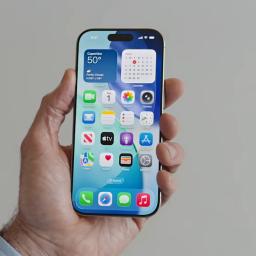 |
by Katie Teague on (#6XW0A)
Have you updated your iPhone to the new iOS 26 yet or are you holding off? It's been available to download since September 15 -here's how to install it if you haven't yet. The new OS was released alongside iPadOS 26 and Apple's other operating system updates. Since then, the first beta of iOS 26.1 has already been released with some newer features.If your phone is compatible with the latest OS, you'll notice substantial changes when you install the new update. You may have already heard about "Liquid Glass," which (intentional or not) is sort of like Apple's take on the old Windows Vista design language. That's the most notable change, but we spent two weeks test-driving many of the other features included in the update - you can check out our hands-on iOS 26 preview for more impressions.Not sure if you have an eligible smartphone or tablet but also don't want to upgrade? No worries, we'll help you find out if your devices will be able to run iOS 26.While Apple didn't nix any iPhones from its eligibility list last year, that's not the case for 2025, as a few models got axed this time around. All iPhone 8 models and the iPhone X were the last to receive the boot in 2023, and this year, iPhones released in 2018 will be left behind.You can find a full list of iPhones and iPads that support iOS 26 and iPadOS 26 below. To see everything you get with the latest OS updates, you can check out our big rundown of what to expect from iOS 26. Additionally, here's everything Apple revealed at the iPhone 17 launch event, including the all-new iPhone Air. (Check out Engadget's liveblog of the event for full details.)These three iOS 18 iPhones aren't compatible with iOS 26Unlike last year, a trio of iPhones won't be eligible to download the newest iOS. These three models that were first released in 2018 won't be coming to the iOS 26 party:
|
 |
by Kris Holt on (#709G8)
The rumors of Marvel's Wolverine showing up during Sony's September State of Play turned out to be true after all. The trailer was our first decent look (well, first official one, anyway) at the game since it was announced back in 2021. Sony and Insomniac Games revealed a release window too: Marvel's Wolverine is coming to PS5 in fall 2026.A gruff-sounding Liam McIntyre (Spartacus: Vengeance, JD Fenix in Gears of War 4 and Gears 5) is taking on the mantle of Logan here. As creative director Marcus Smith reminded us, Logan is an unreliable narrator with a patchy memory, which should make for an interesting wrinkle as the story plays out.Unlike in Insomniac's Spider-Man games, bad guys aren't going to be magically webbed to the side of a tall building after you kick them off the roof. Oh, no no. Wolverine rips an enemy apart in fury with his adamantium claws within the first 30 seconds of this trailer. Not long after, he thrusts them upwards through a goon's skull. We see him slicing off limbs too. Yeah, this isn't going to be a game for younger kids.Wolverine will encounter some familiar faces on his travels, including Mystique and Omega Red. And that's not to mention a certain giant robot that shows up at the end of the trailer."We aim to deliver the ultimate Wolverine fantasy built on Insomniac staples like fast, fluid, and ferocious combat; exhilarating, action-packed set pieces; robust accessibility features; and a gripping story that taps into the core tenets of one of the most compelling comic book characters of all time," Insomniac senior community manager Aaron Jason Espinoza wrote on the PlayStation Blog. "We're breaking new ground with Wolverine, yes, but our penchant for telling stories about heroes overcoming colossal odds is as strong as ever. We're eager to explore Logan's story with you and tap into his signature spin on heroism, which is much darker and more brutal than you might expect from Insomniac."Although we're a year or so away from Marvel's Wolverine coming to PS5 and PS5 Pro, we won't have to wait quite that long for more details. Insomniac promises to reveal additional info in spring 2026.This article originally appeared on Engadget at https://www.engadget.com/gaming/playstation/marvels-wolverine-slices-his-way-onto-ps5-in-fall-2026-220250305.html?src=rss
|
 |
by Jessica Conditt on (#709G9)
Sony's lineup of gaming-focused audio devices is growing with the addition of the PlayStation Pulse Elevate wireless speakers. They work with PC, Mac, PlayStation 5 and PlayStation Portal, and they support Bluetooth and Sony's proprietary PlayStation Link Wireless connection scheme. The Pulse Elevate speakers come in white or black, and they're due to hit the market in 2026. There's no word on price just yet.The Pulse Elevate speakers can be set on charging stands when playing at your desk, or they can be disconnected and used in portable mode. When not docked, they have (an unspecified number of) "hours of battery life," according to Sony's hype trailer. The speakers support 3D audio, they can be tilted back, and they have planar magnetic drivers, built-in woofers and an integrated mic with noise reduction.The PlayStation Pulse Elevate speakers join Sony's Pulse Elite gaming headset and Pulse Explore earbuds. The earbuds retail for $200 and the headset goes for $150, so feel free to use these price points as the foundation of indiscriminate speculation about how much the Elevate speakers will cost when they land next year.This article originally appeared on Engadget at https://www.engadget.com/gaming/playstation/playstation-pulse-elevate-portable-speakers-are-coming-for-your-desktop-in-2026-215320963.html?src=rss
|
 |
by Anna Washenko on (#709GA)
Just in time for all your Halloween gaming projects, Alan Wake 2 will be the free to play for members of the PS Plus program in October. The news was announced during Sony's State of Play presentation.The recent remake of the game showcases Remedy Entertainment's skill with tell eerie, surreal interactive stories. And the fans have responded; it's Remedy's fastest-selling game to date. If you're one of those people who hasn't already bought a copy, now might be the time to join Alan and Saga in solving their supernatural murder mystery.The new batch of PS Plus games, which also includes the compelling puzzle game Cocoon and Goat Simulator 3, will be available starting October 7. And in case you haven't gotten enough of Joel, Ellie and the gang, Sony is also adding The Last of Us Part II to the PS Plus game catalog.This article originally appeared on Engadget at https://www.engadget.com/gaming/playstation/alan-wake-2-will-be-free-on-ps-plus-in-october-213539815.html?src=rss
|
 |
by Ian Carlos Campbell on (#709GB)
Microsoft is bring yet another of its formerly exclusive games to PlayStation. During Sony's latest State of Play, the company announced that Microsoft Flight Simulator 2024 is coming to PS5 on December 8, 2025.Based on the trailer showed during Sony's event, the PS5 version of Microsoft Flight Simulator 2024, will carry over the same graphical detail and giant commercial aircraft of the original, along with support for the PS VR 2 headset for even more immersive cockpit gameplay. Along with accurately simulating real-life airplanes, Flight Simulator also uses real geographical and weather data for its maps, making flight as peaceful or difficult as they would be in real life.Microsoft Flight Simulator 2024 joins a growing collection of former Xbox and PC exclusives that Microsoft has brought to Sony's console. The company started with games like Sea of Thieves and Pentiment, but now even bigger titles like Indiana Jones and the Great Circle come to PS5 eventually.It's all part of Microsoft ongoing Game Pass and game streaming strategy, but it's also working for Sony, too. Helldivers 2 was originally a PS5-exclusive, but when it came to Xbox it almost immediately became one of the best-selling games on the platform.This article originally appeared on Engadget at https://www.engadget.com/gaming/playstation/microsoft-flight-simulator-2024-is-coming-to-ps5-on-december-8-213203456.html?src=rss
|
 |
by Kris Holt on (#709GC)
One thing that Sony confirmed in advance for its September State of Play stream was a first look at gameplay for Saros, the next game from Housemarque (Returnal, Resogun). This is the first completely new project from the developer since it joined PlayStation Studios in 2021, and it opened the livestream.Creative director Gregory Louden took viewers through a peek at the journey of Arjun Devraj (Rahul Kohli), who's seeking answers on a shape-shifting planet called Carcosa. The combat looks very much in the vein of Returnal, with lots of lasers, projectiles and other nasty stuff to avoid.Arjun can trigger a shield to defend himself and redirect incoming projectiles to juice up a power weapon. He also gets a second chance to survive an encounter as there's a revival ability he can use after his first death, but you'll need to unlock the option to do that as it's part of the permanent progression system. You'll be able to upgrade your combat suit and other abilities too. Unsurprisingly, it all looks extremely pretty.Along with the first glimpse at gameplay, we got a release date. Saros will hit PS5 on March 20, 2026.This article originally appeared on Engadget at https://www.engadget.com/gaming/playstation/housemarques-saros-will-hit-ps5-on-march-20-2026-211504381.html?src=rss
|
 |
by Ian Carlos Campbell on (#709GD)
Following the announcement of its first smart glasses with a built-in display, Meta is opening several temporary retail locations where you'll be able to demo the Meta Ray-Ban Display, their Meta Neural Band controller and the rest of the company's Reality Labs products. These new "Meta Lab" locations will offer another way to see the company's new $799 smart glasses, which currently aren't available for purchase without an in-person demo and fitting.For the rollout of the Meta Ray-Ban Display, Meta Lab locations will be available to visit in Las Vegas starting on October 16, Los Angeles starting on October 24 and New York starting on November 13. Meta also says interested Bay Area customers will be able to demo and purchase the new smart glasses at the company's existing Meta Store location in Burlingame, which has been rebranded as a "Meta Lab."While the appeal of having the face-mounted camera and speakers of the Ray-Ban Meta smart glasses is easy to understand, Meta clearly believes adding a display into the mix changes that calculus. The company says interest in the new glasses is part of the reason it's opening these new retail locations. "Demand for in-person demos of Meta Ray-Ban Display and the Meta Neural Band is strong, with appointments in many major cities already booked out through mid-October," according to Meta. Interestingly, Meta also plans to test selling its Ray-Ban Meta smart glasses from vending machines, not unlike Snap did with its Spectacles.These new Meta Labs join Ray-Ban, Verizon, Best Buy and LensCrafters stores as the only official places where you can try Meta's new wearable. It's hard to say if demand for demos will translate into actual sales, but clearly the positive buzz the company's Connect showing was able to drum up has caught some people's interest. You can book a demo at a Meta Lab through the company's website.This article originally appeared on Engadget at https://www.engadget.com/wearables/meta-lab-pop-ups-will-let-you-try-on-the-companys-new-smart-glasses-for-yourself-205756155.html?src=rss
|
 |
by Ian Carlos Campbell on (#709DF)
If you've heard that Apple's new iPhone 17 Pro models are more prone to scratches than past models, the story is not as cut and dry as it might appear. Bloomberg reported on September 19 that in-store iPhone Air and iPhone 17 Pro were already showing scratches, including circular marks from where the phones mounted on MagSafe stands. Now Apple tells 9to5Mac those marks aren't scratches but rather "material transfer" from the stands to the body of the phone.Apple's explanation suggests that simply cleaning demo iPhone 17 Pro units and replacing old MagSafe stands will prevent those markings from happening in the future. That doesn't account for the scratches some iPhone 17 Pro owners have noticed around the phone's camera bump, though. In a recent scratch test video, YouTuber JerryRigEverythingspeculated that Apple's decision to not add a chamfer or fillet to the sides of the iPhone 17 Pro's camera bump left it more prone to damage. Through 9to5Mac, Apple says it designed the Pro's aluminum camera bump in the same way as its other aluminum products and that it's durable, but prone to "small abrasions" over time.
|
 |
by Anna Washenko on (#709DG)
Waymo has unveiled a new enterprise transportation program. The Waymo for Business service offers companies access to the brand's autonomous vehicles on a larger scale than individual one-off rides, with features such as establishing commuter programs, transporting riders to events and providing other forms of corporate travel. Waymo for Business is available in San Francisco, Los Angeles and Phoenix at launch.Clients who sign up for this option can use Waymo's business portal to establish their program and manage riders, whether that's regular employees or limited-time guests. It will also have metrics for budget management and ride activity. The whole operation is still in early days, and it seems possible that Waymo for Business will adapt based on what customers most want from the autonomous vehicle company.2025 has been a busy year for Waymo. The company plans to test its fleet in ten new cities this year, rolled out a teen account option in July, and already has its sights set on Nashville in 2026.This article originally appeared on Engadget at https://www.engadget.com/transportation/waymos-newest-service-caters-to-businesses-194530536.html?src=rss
|
by Sam Chapman on (#6F848)
When we say that NordVPN is a good VPN that's not quite great, it's important to put that in perspective. Building a good VPN is hard, as evidenced by all the shovelware VPNs flooding the market. NordVPN may not be perfect, but it's easily top-five caliber and excels in certain use cases. First, the bad: NordVPN's apps could all stand to undergo a little more quality control, with elements distracting from other elements and inconsistent designs from platform to platform. At least one of its FAQ pages directly contradicts itself. And while all the server locations could unblock Netflix, the one in Nigeria still showed U.S. content, indicating that our real location might have leaked. However, there's a lot of good to balance that out. Speeds are fantastic and we saw no other hint of any kind of leak. Its server network is expansive and not overly reliant on virtual locations. The vast majority of servers are ideal for unblocking foreign websites. The real draw, though, is the extra features, including the innovative and flexible Meshnet, plus a malware blocker that acts more like a full antivirus and forward-looking quantum resistant encryption. Editor's note (9/24/25): We've overhauled our VPN coverage to provide more detailed, actionable buying advice. Going forward, we'll continue to update both our best VPN list and individual reviews (like this one) as circumstances change. Most recently, we added official scores to all of our VPN reviews.Check out how we test VPNs to learn more about the new standards we're using. Table of contents
 |
by Lawrence Bonk on (#709DH)
Valve has broadly rolled out a new Steam store menu after testing it since July. This redesign is available for the standard Steam PC client, the Steam Deck and Steam Mobile.The big news here is that the update makes it easier to find stuff you want to play, which is a good move given the clutter of the current Steam store. Everything has been streamlined, with a new search menu existing up top. This search menu includes options for top sellers, new releases, discounted games and more. These criteria were already available, but all options are now grouped together in a nice and colorful menu.The new "Categories" pull-down menu provides a more tailored feed, as it snags content from your top genres and offers suggested tags to find similar games.Valve says the pre-existing search bar has gotten some upgrades underneath the hood. It can now offer suggestions based on common searches and can bring up a list of games you've recently searched for."With these changes, we're aiming to make your experience smoother and more tailored to your needs," Steam wrote in a blog post back in July. "We've been hearing from players, and experiencing ourselves, that some of the most commonly visited areas of Steam were hard to get to."The store update is rolling out now, so check your preferred Steam client to get started. It might be time to start clearing out that long-neglected wishlist.This article originally appeared on Engadget at https://www.engadget.com/gaming/pc/valve-rolls-out-a-new-steam-store-menu-to-make-it-easier-to-find-games-190027385.html?src=rss
|
 |
by Will Shanklin on (#709B5)
That report from a few weeks ago was spot-on. As The Information's sources tipped, Microsoft 365 Copilot is adding Anthropic's AI models. Microsoft announced today that Claude access is now rolling out for beta testers. For starters, it's being integrated into Copilot's Researcher and its agent development tool."Copilot will continue to be powered by OpenAI's latest models," Microsoft's announcement was quick to stress. Following that report from earlier this month, it was easy to imagine growing tensions between the two. It didn't help that the story came on the heels of reports of uneasy negotiations between the pair.Whether or not there's anything to that, OpenAI models like GPT-5 still fuel most of Copilot... for now. But Microsoft 365's Researcher now allows testers to use Anthropic's Claude Opus 4.1. Copilot's reasoning tool launched earlier this year. It's designed to help you "tackle complex, multistep research."Microsoft posted the brief video below. It shows a new "Try Claude" button in the upper-right corner of the research agent's interface.Copilot Studio, Microsoft's AI agent dev tool, offers similar functionality. There, a drop-down menu lets you choose between OpenAI's and Anthropic's models.Anthropic integration is currently rolling out through Microsoft's Frontier program. (That's its optional beta program for AI previews.) After signing up, you'll need to opt in to use Anthropic. This will all presumably roll out to the wider public later.This won't be the end of Copilot's Anthropic integration. "Anthropic models will bring even more powerful experiences to Microsoft 365 Copilot," Microsoft's Charles Lamanna teased.This article originally appeared on Engadget at https://www.engadget.com/ai/microsoft-adds-claude-models-to-copilot-365-185032970.html?src=rss
|
 |
by Ian Carlos Campbell on (#709B6)
YouTube says it will now let viewers dismiss the popups and video suggestions that appear at the end of videos with a new "Hide" button. These end screen popups are a standard part of most YouTube videos, but the company says it received community feedback that viewers wanted to dismiss them so they "focus on the content they're watching."If end screens are bothering you before the video you're watching has finished, you can now tap or click on a new Hide button in the top right corner of YouTube's video player to dismiss them. It's worth noting, though, that the setting only applies to the current video you're watching, so you'll have to tap on the Hide button again for each new video you watch. Even with that small annoyance, giving viewers the option is a positive change. End screens might improve a channel or videos metrics, but when they get in the way of watching, you should be able to hide them.Alongside this new button, YouTube is also changing an interface element on the desktop version of the video platform. Now you'll no longer see a "Subscribe" button when you hover your mouse over a video's watermark - a feature that was already redundant because of the dedicated Subscribe button under each video.YouTube claims neither of these changes will prevent video creators from adding things like end screens or watermarks if they want to, and the tweaks themselves only have a minor effect on the views or subscriptions a channel earns. "Giving users the option to hide end screens resulted in a less than 1.5 percent decrease in views from end screens," YouTube claims. Meanwhile, "less than ~0.05 percent of all channel subscriptions come from the hover-to-subscribe functionality on the video watermark," so removing the option isn't much of a loss.This article originally appeared on Engadget at https://www.engadget.com/social-media/youtube-will-finally-let-you-hide-popups-at-the-end-of-videos-183002850.html?src=rss
|
 |
by Lawrence Bonk on (#709B7)
Bowers & Wilkins just released the Px8 S2 wireless headphones, a follow-up to the well-reviewed original Px8 cans. This new entry brings a bevy of updated features, many of which were pulled from the recently-released Px7 S3 headphones.They feature new audio drivers, a built-in digital-to-analog converter (DAC) and an improved digital signal processor (DSP.) This allows for a 24-bit/96 kHz high-resolution audio signal. The headphones can handle high-res audio from streaming services like Tidal and Qobuz, thanks to Qualcomm's aptX Lossless audio codec.The sound is aided by a five-band customizable EQ, which is accessible via a proprietary app. This app also lets users set other parameters and play audio directly from streaming platforms.The Px8 S2 headphones also include more microphones for ANC, which should allow for better noise cancellation and a more nuanced transparency mode. The battery lasts for 30 hours, which is in line with all of the other Bowers & Wilkins models.Bowers & Wilkins The overall design has been refreshed, with a slimmer form factor. The company says it's the "most considered and comfortable over-ear headphone design we've ever made." The exterior has been crafted with Nappa leather and die-cast aluminum. There are two colorways to choose from and both are extremely easy on the eyes. These headphones are also slightly lighter than the original Px8 cans.Each unit ships with a new carry case that's been designed to fit in most bags. The Px8 S2 headphones cost $800, which is $100 more than the original Px8 cost when they were released in 2023. Bowers & Wilkins does promise future software updates, including one that brings spatial audio.This article originally appeared on Engadget at https://www.engadget.com/audio/headphones/bowers--wilkins-px8-s2-headphones-have-updated-drivers-improved-anc-and-a-new-look-181913079.html?src=rss
|
 |
by Matt Tate on (#7097V)
When it comes to cooking meat, finding that all-important sweet spot between under- and over-cooked can be tricky to get right every single time. That is, unless you're using one of the ThermoWorks instant-read thermometers that we've been big proponents of for a long time. And right now our favorite one is down to a record low of $76 in select colors, as part of the brand's fall warehouse sale. Usually priced at $109, you're saving $33 if you pick one up now. The Thermapen One records accurate temperatures in an instant (specifically one second or less), which can be the difference between a perfectly medium-rare steak and one that requires a bit too much chewing. This model also has a handy auto-rotating backlit display that allows you to easily see the reading regardless of how you're holding it. It also has useful auto-wake and sleep features, which again, are useful when doneness deals in seconds. An IP67 waterproofing rating means you don't have to worry about it getting splashed. That said, the thermometer isn't suitable for dishwashers, so keep that in mind. The Thermapen One took home our best thermometer award, so this is definitely a deal we'd confidently recommend taking advantage of, but it isn't the only one available right now. ThermoWorks' sale also includes offers on its various BBQ alarm thermometers, battery banks, kitchen utensils and more. You can shop all the deals here. Follow @EngadgetDeals on X for the latest tech deals and buying advice.This article originally appeared on Engadget at https://www.engadget.com/deals/the-thermoworks-thermapen-one-is-30-percent-off-right-now-163043164.html?src=rss
|
 |
by Karissa Bell on (#7097W)
Nearly 15 years in, Instagram has passed a new milestone: the app now reaches 3 billion monthly users, Mark Zuckerberg shared in a post on Threads. That's up from 2 billion monthly users in 2022.Meta doesn't regularly share monthly or daily user numbers for its "family" of apps, but Facebook reached 2 billion daily users in 2023; WhatsApp passed 2 billion monthly users in 2020. The company reported 3.48 billion "daily active people" across facebook, WhatsApp and Messenger last quarter.Meta shared the latest metric as it reportedly plans some significant changes to Instagram. According to Bloomberg, Meta will soon make Reels an even more prominent part of the app. Instagram exec Adam Mosseri told the publication that users will see a redesigned navigation bar that will "highlight private messaging and Reels." The company will also run a test in South Korea and India that will allow users to set Reels as the default feed for the app. (Instagram's newly-announced iPad app already makes Reels the default feed in order "to reflect how people use bigger screens today," the company has said.)It's probably no coincidence that these changes come as the United States government edges closer toward an agreement that will put the US version of TikTok largely in the hands of US-based investors. Despite more than a year of uncertainty surrounding the app's future in the United States, TikTok is still a formidable competitor to Meta more broadly and Instagram specifically.This article originally appeared on Engadget at https://www.engadget.com/social-media/instagram-reaches-3-billion-monthly-users-160554420.html?src=rss
|
 |
by Andre Revilla on (#7094A)
Search Live is now available for Google app users in the US, offering real-time, multimodal search, powered by AI. This feature will enable users to have real-time conversations with Google Search in AI Mode while sharing their phone's camera feed with the app. Search will be able to see and interpret what the user's camera is focused on and offer relevant links for deeper context, as well as live guidance.The new feature can be accessed from a new "Live" icon beneath the search bar in the Google app. It can also be used from Google Lens by selecting the Live option at the bottom of the screen. Camera sharing will be enabled by default here to allow for an instant back-and-forth conversation about whatever is in front of you.Search Live is available through the Google app on iOS and Android now. This wider rollout only supports English for now.This article originally appeared on Engadget at https://www.engadget.com/ai/googles-ai-search-live-is-now-available-to-all-us-app-users-151849371.html?src=rss
|
 |
by Billy Steele on (#7094B)
With the arrival of iOS 26, Apple's Live Translation feature for AirPods is now ready for use. It's available on older models of the company's earbuds, so you don't need the new AirPods Pro 3 to access it. There are some hardware and software requirements though, so let's dive into what you'll need before you can start translating conversations.Hardware requirementsLive Translation on AirPods only works on models with the H2 chip. This includes the AirPods 4 with ANC, AirPods Pro 2 and AirPods Pro 3. You'll also need an iPhone that can run Apple Intelligence, which is the iPhone 15 Pro, Pro Max or any member of the iPhone 16 or iPhone 17 lineups.Once you have your hardware at the ready, you'll need to make sure Apple Intelligence is turned on in the Settings app on your iPhone. You'll also need to make sure that Apple's Translate app is installed as it's needed to power this whole thing. Lastly, your AirPods should be on the latest firmware, and you can check that in the AirPods settings menu on your iPhone.Step 1: Download languages for Live TranslationAppleThe first step towards using Live Translation is to download the languages you'll need. What's more, you'll have to download both the language you're speaking and the one the other person is speaking. For example, if you're translating Spanish to English, you'll need to download both the Spanish and English language packs (yes, even if your phone's system is already set to English). I'd recommend downloading all of the languages you think you'll need before traveling, that way you aren't trying to do so in the moment you need them.Once this is done, all of the processing for Live Translation will happen on your iPhone and your conversation data is private. You will also be able to use Live Translation offline, too, so you won't have to worry about finding a Wi-Fi connection or buying a local SIM card.How to complete the download process:
|
 |
by Matt Tate on (#7094C)
Following Sega's Ryu Ga Gotoku Studios accidentally leaking the game's existence last week, Yakuza Kiwami 3 has been officially announced by the developer during its RGG Summit presentation. Like Yakuza Kiwami and Yakuza Kiwami 2 before it, Yakuza Kiwami 3 is a full remake of an early entry in the long-running series, in this case 2009's Yakuza 3, which originally launched on the PlayStation 3.Yakuza Kiwami 3 is another ground-up remake from RGG, featuring modern graphics, enhanced gameplay and new cutscenes. The game continues the adventures of the (at this point in the story) middle-aged Kazuma Kiryu, who temporarily puts his criminal career on hold to help run an orphanage that will become very important in later entries in the series. Yakuza Kiwami 3 is also bundled with a free spinoff game called Dark Ties, which focuses on Kiryu's adversary, Yoshitaka Mine.Yakuza Kiwami 3 and Dark Ties will be released on February 12, 2026, for PS4 and PS5, Xbox and PC (Steam), as well as the Switch 2. Yakuza Kiwami and Yakuza Kiwami 2 are both coming to Switch 2 later this year, and RGG has also announced that Yakuza 0: Director's Cut is coming to PS5, Xbox and PC on December 8. The expanded version of what many consider to be the best Yakuza game of all time has been a Switch 2 exclusive until now.This week's RGG Summit also gave us a brief update on the studio's next game, Stranger Than Heaven, which we still know very little about, other than that it's separate from the Like a Dragon and Judgement series and is set during multiple time periods in the 20th century. The game is still several years away from release, but a new behind the scenes trailer shows off snippets of in-game footage and motion capture sessions with actors.At the time of writing, we're still waiting for an announcement of the next Like a Dragon game, with the most recent entry being this year's wonderfully titled Like a Dragon: Pirate Yakuza in Hawaii.This article originally appeared on Engadget at https://www.engadget.com/gaming/yakuza-kiwami-3-is-official-and-its-out-next-year-with-a-bonus-new-spinoff-game-140315189.html?src=rss
|
 |
by Lawrence Bonk on (#6ZYBR)
Apple Music has a great deal going on right now for those interested in the Family Plan. New subscribers can get three free months of that plan - which, at $17 per month normally, comes out to $51 in savings for the whole period. Just note that the last day you can get the promotion is September 24. The Family Plan allows six different users to access the platform. It offers cross-device support and each user is tied to an Apple ID, so their favorite music won't mess with anyone else's algorithm. Apple Music actually topped our list of the best music streaming platforms, and for good reason. It sounds great and it's easy to use. What else is there? All music is available in CD quality or higher and there are plenty of personalized playlists and the like. The platform also operates a number of live radio stations, which is fun. The service is available for Android devices, but it really shines on Apple products. To that end, the web and Windows PC apps aren't as polished as the iOS version. It doesn't pay artists properly, but that's true of every music streaming platform. Apple Music does pay out more than Spotify, but that's an incredibly low bar. Offer for new subscribers redeeming on eligible devices. Auto-renews at $16.99/mo until cancelled. Requires Family Sharing. Terms apply. Check out our coverage of the best Apple deals for more discounts, and follow @EngadgetDeals on X for the latest tech deals and buying advice.This article originally appeared on Engadget at https://www.engadget.com/deals/its-the-last-chance-to-get-three-free-months-of-the-apple-music-family-plan-151240128.html?src=rss
|
 |
by Mariella Moon on (#708YX)
Logitech has launched the Signature Slim Solar+ K980, a new solar-powered keyboard that you don't need to put under the sun whenever it runs low on battery. The company says it can use "light from any light source to stay charged and ready to use" and that you can use it in complete darkness for up to four months once it's fully charged. As long as the light source reaches 200 lux in brightness, which is considered dim lighting during daytime, it can charge the keyboard. "Even the need to think about charging can be a distraction, so we designed Signature Slim Solar+ to take that off your plate completely," said Art O'Gnimh, the General Manager of Core Products Group at Logitech.You don't have to think about plugging the keyboard in or changing its battery: It's powered by a rechargeable battery that Logitech says can last up to 10 years. But if it does malfunction, the company told The Verge that you can replace it on your own, because it's encased in plastic and is sold by iFixit. The keyboard absorbs light through a strip above the keys themselves, which use a scissor-switch mechanism and are in a full-size layout with a separate number pad. It's compatible with multiple operating systems, and you can link it with up to three multi-OS devices and jump from one to the other with its Easy-Switch keys. If you use the Logi Options+ app, you can program its action key to automate simple tasks and to customize its AI launch key to instantly fire up the AI chatbot of your choice.The Signature Slim Solar+ K980 is now available for $100. Logitech is also selling a business variant with a USB-C receiver for $110 and a North America-exclusive model with a layout specifically for Mac for $110.This article originally appeared on Engadget at https://www.engadget.com/computing/accessories/logitechs-new-keyboard-can-be-recharged-by-any-kind-of-light-120019932.html?src=rss
|
 |
by Lawrence Bonk on (#708X5)
Spotify just announced integration with popular DJ software platforms like rekordbox, Serato and djay. This will make it much easier to build out sets from playlists and to do cool stuff like blend tracks.The company says that users "will be able to access their entire library and playlists directly within desktop DJ software," with just one caveat. This is only for Premium subscribers. The integration is available in 51 global markets.It looks pretty easy to get started. Just log into a Premium account directly inside of the preferred DJ software. That's pretty much it.It's worth noting that this isn't a brand-new idea. Spotify offered something similar for years, but stopped supporting third-party DJ platforms in 2020. This was a business decision that was believed to be based on rights constraints.The platform has been busy lately. Spotify recently introduced lossless streaming and an in-app messaging feature. However, it still pays artists peanuts while making nearly $17 billion each year. It's also worth remembering that CEO Daniel Ek is heavily invested in a military AI company called Helsing.This article originally appeared on Engadget at https://www.engadget.com/entertainment/music/spotify-now-directly-integrates-with-dj-software-090055300.html?src=rss
|
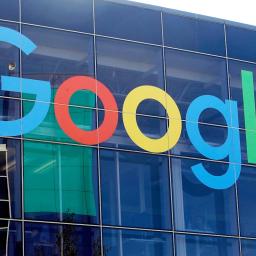 |
on (#708KT)
Google's AI Mode is continuing its rapid global growth. Today, the company announced that this addition to Google Search is rolling out in Spanish. The new option is available in all countries that support AI Mode. The move will allow Spanish speakers around the world to engage with this AI chatbot in their language of choice when asking more complicated questions than a search engine can typically answer well.The proliferation of this AI enhancement to Google's traditional search has happened at a break-neck pace. AI Mode was first introduced in March and then made available across the US in May. The first language expansion came earlier this month with the addition of AI Mode in Hindi, Indonesian, Japanese, Korean and Brazilian Portuguese.This article originally appeared on Engadget at https://www.engadget.com/google-ai-mode-now-speaks-spanish-223346697.html?src=rss
|
 |
by Ian Carlos Campbell on (#708KV)
Apple has delayed the release of its new series The Savant just three days before it was supposed to premiere on September 26, Deadline reports. The series follows an investigator, played by Jessica Chastain, who infiltrates a domestic extremist group in the US. Apple hasn't provided a new release date for the show."After careful consideration, we have made the decision to postpone The Savant," the company shared in a statement to Deadline. "We appreciate your understanding and look forward to releasing the series at a future date." The timing of the sudden delay, and the lack of explanation for why the company is delaying the show, could be telling. Disney made a similar knee-jerk reaction in placing Jimmy Kimmel Live! on indefinite hiatus following a joke Kimmel made about the reaction to the killing of right-wing activist Charlie Kirk.Given that The Savant likely focuses on preventing acts of political violence, it might make you wonder who Apple is worried its show will offend. But it's also entirely possible that the company is trying to avoid people making any kind of association between its TV show and a very public assassination.Apple generally avoids rocking the boat whenever possible, particularly when it could hurt its business interests. The Problem With Jon Stewart was reportedly cancelled when Jon Stewart wanted to cover topics Apple deemed controversial, like China and artificial intelligence. Apple does business in China, so it seems likely the company was skittish about airing anything that could be viewed as criticism, even if having difficult conversations was the premise of Stewart's show. The decision to pull The Savant, even if despite reading like the company is worried about offending right-wing extremists, was likely made from a similar place of caution.This article originally appeared on Engadget at https://www.engadget.com/entertainment/streaming/apple-tv-indefinitely-delays-its-domestic-extremism-thriller-the-savant-223044979.html?src=rss
|
 |
on (#708F0)
Amazon is pivoting its grocery operations in the UK, announcing that it will close 14 of its Amazon Fresh stores in the country. The remaining five Amazon Fresh locations in the UK will be converted to the Whole Foods Market brand. Rather than the brick and mortar shops, Amazon said it will focus on online grocery deliveries within the region. In 2026, the company said it expects to add perishables to its Same-Day Delivery orders for UK customers, which was just introduced in the US last month.The move echoes a similar contraction in 2023, where Amazon said it would shutter both some Fresh supermarkets and some Go convenience stores. Many of these shops highlighted the Just Walk Out tech from Amazon, which it introduced in the US in 2018 and in the UK in 2021. Just Walk Out eliminated cashiers in those stores and instead charged customers by using a network of cameras, sensors and human observers checking video feeds to calculate the tab for a person's purchase and then charge them afterwards. However, the approach yielded concerns around cost, accuracy and privacy. Amazon stopped using Just Walk Out in its US Fresh stores last year.Update, September 23, 2025,5:55PM ET: Revised to correct a misstatement about Amazon's current use of Just Walk Out in the US.This article originally appeared on Engadget at https://www.engadget.com/amazon-is-closing-all-fresh-grocery-stores-in-the-uk-195200222.html?src=rss
|
 |
on (#708HJ)
Next year, baseball reasons will have one less reason to rage at the umpire. Major League Baseball announced today that it will introduce the Automated Ball Strike challenge system in the 2026 season for all spring training, championship season and postseason games. In other words, next year there will be a way for the players to attempt to overturn an umpire's call about whether a pitch counts as a strike or a ball if they disagree with the initial decision.ABS uses a network of a dozen camera to record every pitch thrown. The umpire will still call the pitch a ball or strike as usual, but under the new system, the pitcher, catcher or batter can immediately challenge that decision. Coaching staff and other players cannot offer input on whether or not a challenge is initiated. If the cameras show any part of the ball touching the batter's strike zone, the pitch will be counted as a strike. All teams will begin a game with two challenge opportunities, and only lose them if they challenge unsuccessfully. For games that go into extra innings, a team will get an additional challenge if it has none remaining at the start of the additional gameplay.Baseball has taken a gradual path to introducing this tech. ABS has been tested at the Triple-A level since 2022, and it finally got a chance in the majors during spring training and in the All-Star Game this year. Other sports have also been leveraging electronics to ensure that gameplay rules and scoring are consistent. Football/soccer has implemented a video assistant referee (VAR) system in several leagues, including FIFA and the UK's Premier league. Tennis is also adopting electronic line calls at Wimbledon and other tournaments. Even the electronic systems are not infallible, but considering how much any high-level athletic endeavor can be won or lost by millimeters, having a backup for the human eye seems like a net positive.This article originally appeared on Engadget at https://www.engadget.com/major-league-baseball-will-adopt-an-automated-challenge-system-in-2026-205023531.html?src=rss
|
 |
by Will Shanklin on (#708HK)
Curious to see if those Forza Horizon 6 rumors are true? You may not have long to wait. Xbox's presentation at the Tokyo Game Show 2025 is fast approaching. You can watch the event live right here on September 25 at 6AM ET.Forza Horizon 6 is rumored to have a Japan setting, making this week's event a logical venue for its announcement. That's not the only thing to go on. Windows Central reported last month that it had seen official documentation suggesting the game would be announced at the Tokyo Game Show. An Xbox executive producer even posted earlier this month that it would be an event "you don't want to miss." (Am I sadistic for hoping he was hyping up something like a new Xbox dashboard feature?)The Xbox brand could use some positive mojo. Last week, Microsoft announced that it would raise console prices for the second time in less than five months. The increase, which begins on October 3, was "due to changes in the macroeconomic environment." (That sounds like a copywriter's answer to "How do you say 'tariffs' without actually saying 'tariffs?'") It's all the more reason the company would love to shift your focus to something fun.You can stream Microsoft's event below on September 25 at 6AM ET.This article originally appeared on Engadget at https://www.engadget.com/gaming/xbox/how-to-watch-xboxs-tokyo-game-show-livestream-204657743.html?src=rss
|
 |
by Ian Carlos Campbell on (#708HM)
With the launch of the ROG Xbox Ally only a few weeks away on October 16, the fantasy of a portable Xbox is about to be a lot more real. As a recent video from YouTuber James Channel shows, though, with a first-generation Xbox and the right components, you can make your own version of an Xbox handheld right now. Just don't expect it to be pretty.James' "portable monstrosity" strips away the original Xbox's large plastic casing and thick internal cables and preserves the bare essentials: a motherboard and the console's disk drive, with a new flash drive and a display from an iPod video accessory. All those components are precariously mounted between the left and right halves of an Xbox controller, for a complete package that seems less easy to hold than ASUS' current handheld PCs, but only marginally so. It's a quick and dirty assembly with a surprising amount of super glue - a far cry from the polished Xbox 360 handheld created by YouTuber Millomaker - but it gets the job done.You can already stream Xbox games to a multitude of screens, or play their PC versions on a growing number of handheld PCs. You don't need to turn an original Xbox into a portable device, but considering Microsoft and ASUS have yet to announce pricing for their new handhelds, maybe keep this cheaper alternative in your back pocket.This article originally appeared on Engadget at https://www.engadget.com/gaming/xbox/theres-more-than-one-way-to-make-an-xbox-handheld-201503415.html?src=rss
|